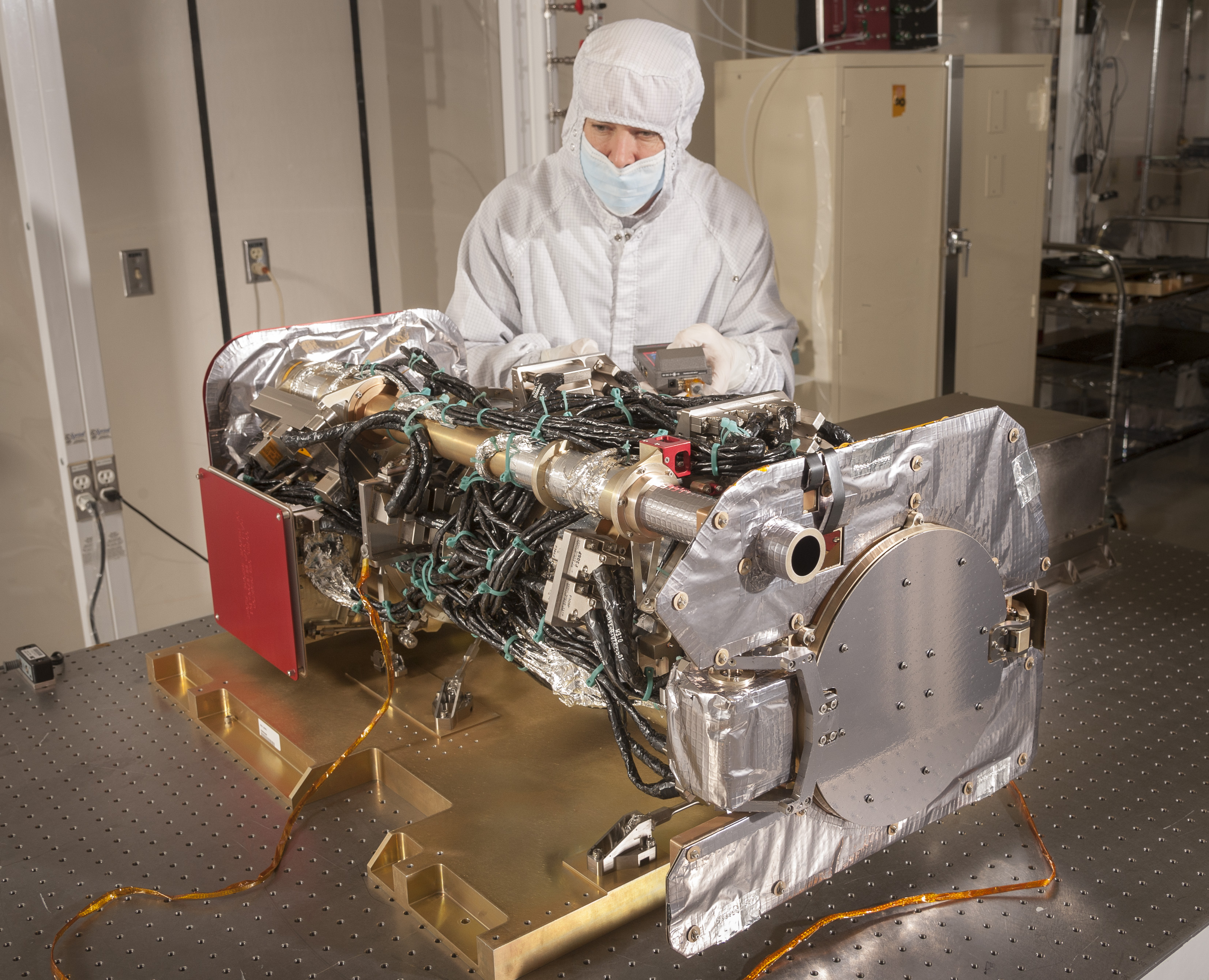To learn more, visit commerce.gov.
For the latest forecasts and critical weather information, visit weather.gov.
Important Space Weather Instrument Cleared For Installation Onto NOAA's GOES-R Spacecraft

December 17, 2013
NOAA's Geostationary Operational Environmental Satellite – R (GOES-R) Series Program completed its next instrument, the Solar Ultra-Violet Imager (SUVI), which is now ready for integration onto the GOES-R spacecraft.
SUVI is a telescope that will observe the sun in the extreme ultraviolet wavelength range and provide full-disk solar images around the clock. The instrument will identify active regions on the sun, including solar flares and eruptions, which could lead to coronal mass ejections. These eruptions affect space weather and can have impacts on Earth including the disruption of power utilities, communication and navigation systems, and can damage orbiting satellites and the International Space Station.
SUVI replaces the current GOES Solar X-ray Imager (SXI) instrument and represents an improvement in the coverage and resolution over the SXI. SUVI will improve space weather forecasting to enable NOAA's Space Weather Prediction Center to provide earlier warnings to electric power companies, telecommunication providers and satellite operators to mitigate possible impacts.
"This milestone marks the completion of the third space weather instrument to fly on board the GOES-R satellite," said Greg Mandt, GOES-R system program director. "SUVI joins the Space Environment In-Situ Suite (SEISS) and Extreme X-Ray Irradiance Sensor (EXIS) instruments in preparation for spacecraft integration. The remaining space weather instrument, the Magnetometer, will be complete in the coming months."
SUVI will be shipped from the Lockheed Martin Advanced Technology Center in Palo Alto, Calif. to its sister Lockheed Martin facility in Littleton, Colo., in early 2014 to be installed onto the first GOES-R Series Program spacecraft. Lockheed Martin is building the spacecraft for the GOES-R series.
To date, the Advanced Baseline Imager (ABI), EXIS, and SEISS are complete and poised to be integrated onto the spacecraft. The remaining GOES-R instruments to be delivered are:
- Geostationary Lightning Mapper (GLM), which will, for the first time, provide continuous surveillance of total lightning activity from geostationary orbit over the Western Hemisphere;
- Magnetometer, which will provide measurements of the magnetic field surrounding Earth that protects the planet from charged particles released from the sun. These particles can be dangerous to spacecraft and human spaceflight. The geomagnetic field measurements will provide alerts and warnings to satellite operators and power utilities.
GOES-R’s instruments will feature improved terrestrial and solar weather monitoring tools and will provide near real-time data to forecasters during severe weather events. The first satellite in the GOES-R series is currently scheduled for launch in March 2016.
For more information about NOAA's Satellite and Information Service please visit www.nesdis.noaa.gov.